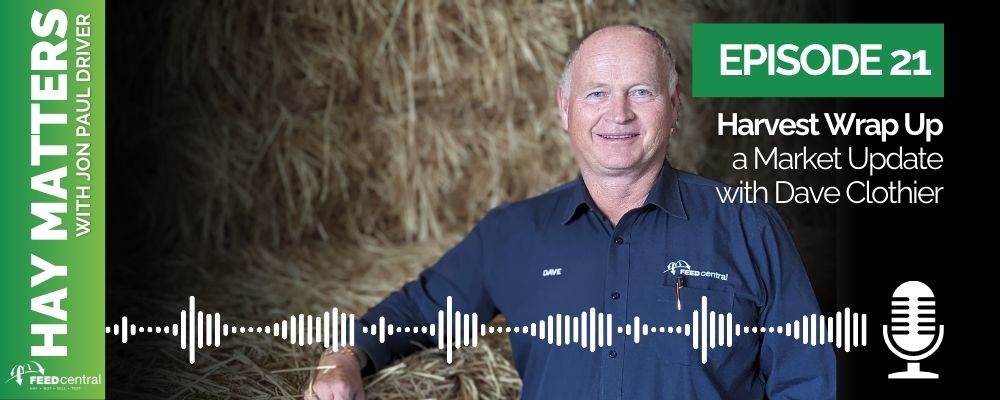In this market update episode of the Feed Central Hay Matters Podcast, host Jon Paul Driver and Dave Clothier discuss the state of the Australian hay market as the harvest season winds down. They explore how recent weather events have affected hay quality and yields across different regions, with a range of grades now available. The episode also touches on the high demand from the beef sector, pricing across the different regions, and considerations for buyers looking to secure quality hay in light of potential supply shifts in the coming months.
- Hay production in Queensland is mostly complete, with limited shed availability there is a higher proportion of paddock stacks.
- New South Wales and Victoria are nearing completion, although recent rain has affected quality, resulting in variable quality and the majority of sheds now full.
- In South Australia and Western Victoria, drought and frost have reduced yields by 30-50% compared to last year, causing significant losses for some growers.
- Recent storms and wet conditions have delayed harvests in the north, leading to bleached, lower-grade hay with thicker stems and higher NDF. Overall, high-quality hay volumes are down, as adverse weather and frost have pushed many high-yielding crops toward grain production instead of hay.
- High canola prices mean fewer frosted canola crops were turned into hay, contrary to initial expectations.
- Limited vetch planting this season has reduced supply, driving up demand for lucerne and other protein-rich hays, with prices expected to remain firm.
- Prices are steady across regions, with FCA grade cereal hay around $250 per tonne, likely holding through Christmas. Many producers are holding back supply in anticipation of stronger demand and firmer prices in early 2025.
- The beef sector’s demand for hay is strong due to herd growth and export opportunities, while the dairy sector is purchasing more cautiously given the variable hay quality and limited protein-rich options.
- Buyers are advised to secure supplies now to access the broadest quality selection at stable prices, avoiding potential price increases and compromised quality in early 2025.
- With high-demand periods likely through the summer and autumn periods, it’s important to factor in both quality and location to optimise the best delivered pricing.
Best wishes,


